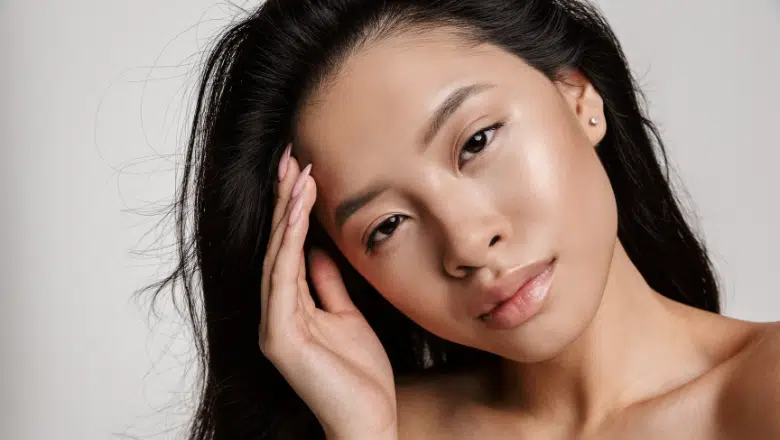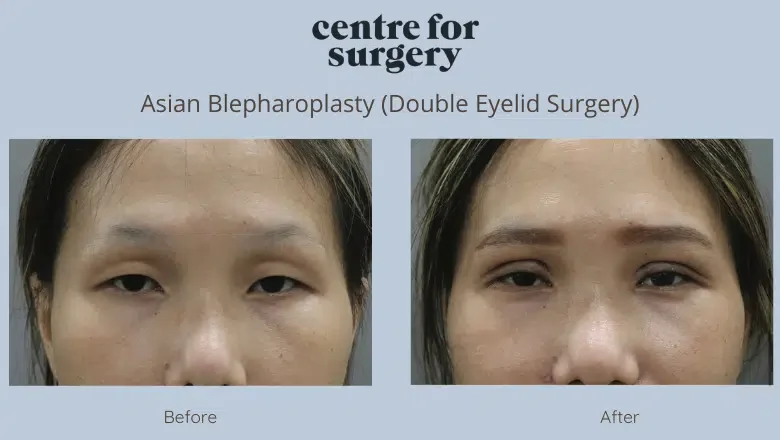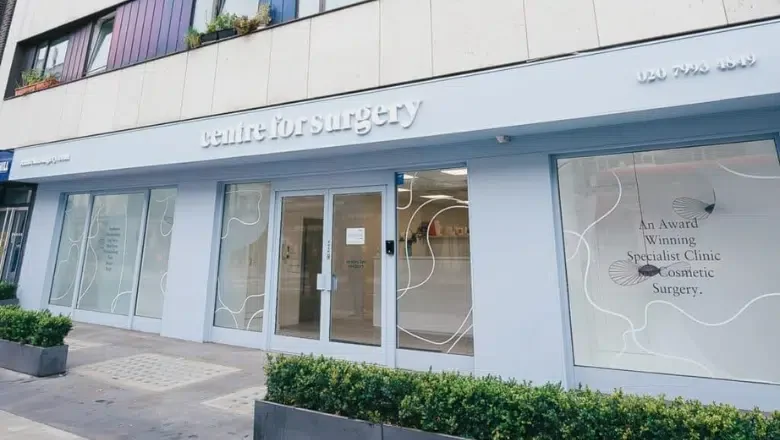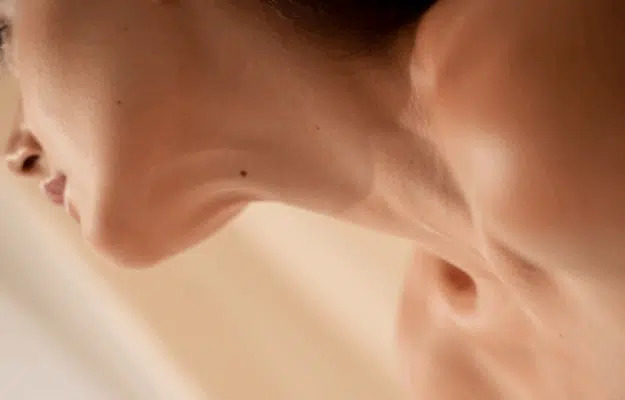Asian Double Eyelid Surgery in London
Asian Blepharoplasty, or double eyelid surgery, is a modified version of an upper eyelid lift or upper blepharoplasty. It is designed to surgically create an eyelid crease that has previously been covered beneath prominent epicanthal folds, which are most commonly seen in the eyelids of people of Far Eastern Asian heritage.
RELATED: What is Asian Upper blepharoplasty?
Meet Dr Kwong - Specialist Oculoplasty Surgeon
Dr Kwong is a highly skilled oculoplastic surgeon specialising in rejuvenating and enhancing the delicate areas around the eyes. He completed his undergraduate studies at the University of Cambridge and then his postgraduate medical studies at the University of Oxford. He completed his residency in eye surgery in London at Europe’s busiest eye hospital. Then, he undertook further oculoplastic fellowship training at centres of excellence in London, North America, and East Asia.
What is an epicanthal fold?
The epicanthal fold is a distinctive fold of skin located near the inner corner of the eyes. Epicanthal folds are most commonly observed in individuals of Asian descent. Many people may be concerned about an excessively tired or puffy-looking eye appearance due to the epicanthal skin fold, which gives the impression of closing the eye. Surgically repositioning or reducing the prominence of this double eyelid skin fold can help refresh and enhance the eyes, leading to a significant boost in youthfulness. Double eyelid surgery can help to open up the eyes. This allows people to improve their eyes with the creative application of makeup in ways that take advantage of having a single eyelid crease formed due to Asian blepharoplasty.
RELATED: Everything you wanted to know about blepharoplasty
An epicanthal fold may also be seen in those with Down syndrome and younger children before growth and development have fully completed. Our surgeons do not perform surgery on these patient groups or anyone below the age of 18.
Asian Blepharoplasty Before & After
What are the benefits of Asian double eyelid surgery?
People choose to have double eyelid surgery or Asian Blepharoplasty for several reasons, depending on the particular look they are trying to achieve. The procedure can be performed for either aesthetic or functional purposes. Most patients seeking Asian Blepharoplasty at Centre for Surgery do so to improve the cosmetic appearance of their eyes.
The most common reasons for seeking Asian double eyelid correction include the following:
- Desire to achieve a single crease to reduce the excessive prominence of skin folds above the eyelid.
- Preference to have a more uniform appearance of the upper eyelids.
- Desire to reduce the appearance of prominent upper eyelids and excessive puffiness above the eyes.
- Wanting to open up the eyes, which have been partially covered by epicanthal folds, to achieve a refreshed look without looking tired or fatigued.
Asian double eyelid reduction reduces or eliminates epicanthal folds, creating a more defined eyelid crease. The procedure can help people achieve a more youthful upper third of the face, resulting in enhanced and vibrant-looking eyes. Many patients tell us that they feel much younger after undergoing double eyelid reduction. The procedure is popular with Asian men and women of different ages.
What does Asian eyelid surgery involve?
Asian blepharoplasty surgery typically takes approximately 1 to 2 hours, depending on the extent of surgical correction required. Your goals for treatment will determine the duration. If the procedure is combined with lower eyelid surgery, it can take between 2 and 3 hours. If the procedure is carried out independently, it is easily performed with a local anaesthetic alone. A general anaesthetic may be preferred for your comfort when combined with lower blepharoplasty. Double eyelid surgery involves the surgical creation of a supra-tarsal skin crease. This will help reduce the appearance of the epicanthal folds and significantly enhance the appearance of the eyes. Asian eyelid surgery requires a high level of precision from an experienced consultant plastic surgeon to preserve the normal functioning of the eyelids. The surgery is carried out on a prominent part of the face, and it is essential to maintain meticulous surgical technique to minimise the appearance of scarring. The procedure is most commonly performed as a day case, which means you can go home later the same day once you have recovered from the anaesthetic effects.
Recovery after Asian blepharoplasty
Recovery after Asian blepharoplasty takes approximately two weeks, although it can take up to 4 weeks, particularly if double eyelid correction is combined with lower eyelid surgery. The incision lines can take between 3 and 6 months to flatten and fade to a faint white colour. Following your surgeon’s postoperative instructions will help to minimise the appearance of scarring. The procedure will result in a thin scar within the eyelid crease. When people apply makeup, the scar will be virtually invisible.
The results of Asian blepharoplasty will vary between patients, depending on their individual treatment goals. All types of surgery involve certain risks. The risks associated with Asian double eyelid surgery will be discussed during your in-person consultation. You can then make an informed decision on whether the procedure is correct for you.
Can Asian double eyelid surgery produce a Caucasian eyelid appearance?
The appearance of Asian eyelids can differ significantly within the Far East population, as can differences between people from other ethnic backgrounds. This is despite certain genetic characteristics being more common in people of Asian heritage. The procedure does not necessarily produce eyelids that appear more Western. Asian eyelid surgery is primarily designed to enhance the appearance of the eyes, making the eyelids appear more open and refreshed. Creating a single eyelid crease helps achieve this, allowing many patients to apply eyeshadow makeup more effectively.
Achieving the best Asian Blepharoplasty results depends on selecting a highly skilled oculoplastic surgeon with extensive experience in all types of eyelid surgery, including double eyelid correction. Results should appear natural-looking, in harmony with your overall facial features, and respectful of your ethnic features without making you appear more ‘western’. The vast majority of patients with this procedure often tell us how they seem more awake with a refreshed appearance, but without looking like they have had surgery. Achieving natural-looking results is a key objective of any Asian double eyelid surgery in London. When researching the procedure, it is essential to avoid choosing a surgical clinic solely based on price.
An inexperienced surgeon may excessively adjust the position of your eyelids or remove an excessive amount of skin, which could lead to serious complications that may require future reconstructive surgery. This could result in more time and expense than choosing a skilled surgeon from a reputable clinic, such as the Centre for Surgery.
Where to go for Asian double eyelid surgery in London?
Several surgeons carry out Asian eyelid surgery in London. However, it is essential to be aware that not all surgeons have the same level of expertise and experience in performing this type of surgery. There are certain risks of any eyelid surgery, including asymmetrical results. Always conduct extensive research on your clinic and view its reviews to learn about the levels of medical care offered. It is essential to appreciate that results can vary between patients, and all types of invasive cosmetic surgery carry certain risks. This is why you should always choose a fully qualified consultant Plastic Surgeon based in the UK instead of travelling overseas. Having surgery in the UK will enable you to be closely followed by your surgeon, ensuring you achieve the best results and manage any potential complications.
Our surgeons are highly regarded eyelid specialists dedicated to producing natural-looking eyelid surgery results, including Asian double eyelid surgery, upper and lower blepharoplasty and canthoplasty.
If you want an enhanced eye appearance that appears natural and in harmony with your facial features, call us on 020 7993 4849 to schedule an in-person consultation with a specialist eyelid surgeon in London. Our detailed and informative eyelid surgery blogs provide further information about all aspects of eyelid surgery.
Medical references
Leading Experts in Asian Blepharoplasty at Centre for Surgery
FAQs
-
What is Asian blepharoplasty?Asian blepharoplasty, also known as double eyelid surgery or Asian eyelid surgery, is a cosmetic procedure that aims to create a crease in the upper eyelid for patients of Asian descent who are born with a single eyelid or have a less defined eyelid crease.
In many Asian countries, a single eyelid is common, and some patients may desire a more Westernised appearance with a defined eyelid crease. The procedure involves making a small incision along the upper eyelid and creating a crease to form a double eyelid appearance.
Asian blepharoplasty is a highly specialized procedure that requires a surgeon with extensive experience in oculoplastic surgery and a deep understanding of Asian facial anatomy. The goal is to create a natural-looking crease that complements the individual's facial features and enhances their overall appearance.
The procedure can be performed under local anaesthesia, and the recovery time is typically minimal. The results of Asian blepharoplasty can be long-lasting, and the procedure can improve the patient's self-confidence and overall quality of life.
Asian blepharoplasty is a cosmetic procedure that should only be performed by a skilled and experienced plastic surgeon. At Centre for Surgery, our team of expert plastic surgeons specialise in oculoplastic surgery and have extensive experience performing Asian blepharoplasty with natural-looking results that complement the individual's unique features. We work closely with each patient to create a personalised treatment plan that addresses their specific needs and goals. -
What is Double Eyelid Surgery?Double eyelid surgery, also known as Asian blepharoplasty or double eyelid blepharoplasty, is a specialised procedure designed to create or enhance the appearance of an eyelid crease, often referred to as a "double eyelid." This crease, also known as the supratarsal fold, is present in various degrees in different individuals and may be absent in some due to genetic factors.
The procedure is especially popular among people of East Asian descent, where the absence of an eyelid crease is more common. However, the aim of this surgery isn't to erase or diminish one's racial or ethnic heritage. Instead, it's designed to create a slight fold in the upper eyelid, which can make the eye appear wider, brighter, or more open, while still preserving the original shape and unique characteristics of the eye.
The double eyelid surgery can be performed alone or in conjunction with other procedures such as an eyelid lift or brow lift, to rejuvenate the eye area and provide a more youthful appearance.
Patients opt for this procedure for a variety of reasons. Some may want to reduce the sensation of heaviness or fullness in their eyelids or minimise the appearance of puffiness or tiredness. Others might desire to enhance their eyelid crease to facilitate the application and visibility of eye makeup, such as eyeshadow and eyeliner. In some cases, reducing the volume of the eyelid can also make the lashes seem longer and more prominent.
During the procedure, the surgeon meticulously reshapes the skin, muscle, and fat around the eyes to create or enhance the eyelid crease. The surgeon will discuss the surgical plan with the patient during a comprehensive consultation, taking into account the patient's specific goals and facial anatomy to ensure a natural, harmonious result. The surgeon can also correct any pre-existing asymmetry between the eyelids, ensuring a more balanced, symmetrical appearance. -
Why do people get Asian eyelid surgery?People of Asian descent may choose to undergo Asian eyelid surgery, also known as double eyelid surgery or Asian blepharoplasty, for a variety of reasons. One of the most common reasons is to create a crease in the upper eyelid for a more Westernised appearance.
In many Asian countries, a single eyelid is common, and some patients may desire a more defined eyelid crease, which is considered a beauty standard in Western cultures. Asian eyelid surgery can create a double eyelid appearance, making the eyes appear larger and more defined.
In addition to aesthetic reasons, Asian blepharoplasty can also address functional concerns. For some patients, a single eyelid can cause excess skin to fold over the eyelashes, obstructing their vision. Creating a double eyelid can lift the excess skin and improve vision. -
Is double eyelid surgery painful?Double eyelid surgery, also known as Asian blepharoplasty or Asian eyelid surgery, is generally not considered a painful procedure. The surgery is typically performed under local anaesthesia or with sedation, which means that the patient will not feel any pain during the procedure.
After the surgery, patients may experience some discomfort, swelling, and bruising around the eyes. However, most patients describe the pain as mild and manageable with over-the-counter pain medications such as paracetamol or ibuprofen. -
How long does it take to recover after asian blepharoplasty?Recovery after Asian blepharoplasty, also known as double eyelid surgery, can vary from person to person. In general, patients can expect to have some swelling and bruising around the eyes for the first week after the surgery. The swelling typically peaks around the second or third day and gradually subsides over the following week.
During the first week after surgery, patients are advised to rest and avoid strenuous activities, as well as any activities that may increase blood pressure, such as bending over or lifting heavy objects. They may also be advised to sleep with their head elevated to reduce swelling.
Most patients can return to work and regular activities within 7-10 days after surgery. However, it is important to follow the post-operative instructions provided by the surgeon to ensure a smooth and successful recovery.
It may take several weeks for the swelling to completely subside, and patients may notice some residual bruising or discolouration around the eyes for a few weeks after surgery. It is also important to avoid direct sunlight or wear sunglasses to protect the eyes during the healing process. -
Will I get scars after Asian blepharoplasty?Asian blepharoplasty involves making a small incision along the upper eyelid to create a natural-looking crease. While any surgical incision will result in some scarring, the incision made during Asian blepharoplasty is usually very small and well-concealed within the natural folds of the eyelid.
The scarring after Asian blepharoplasty is typically minimal and fades over time. Most patients find that the scars are not noticeable and do not detract from the overall appearance of the eyes. In some cases, scars may be slightly visible during the initial healing period, but these should fade over time with proper care and attention.
Make sure to choose a skilled and experienced plastic surgeon at Centre for Surgery who can perform the procedure safely and minimise the risk of complications, including scarring. Following proper postoperative care instructions, such as avoiding direct sunlight and wearing sunglasses, can also help minimise scarring and promote optimal healing.













